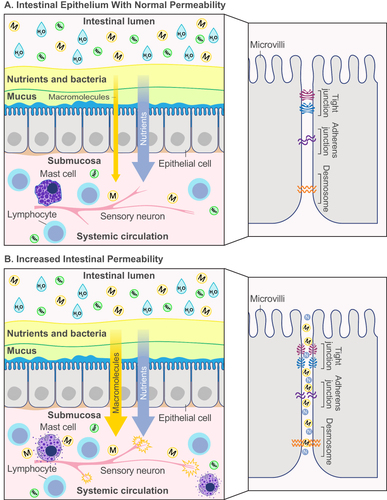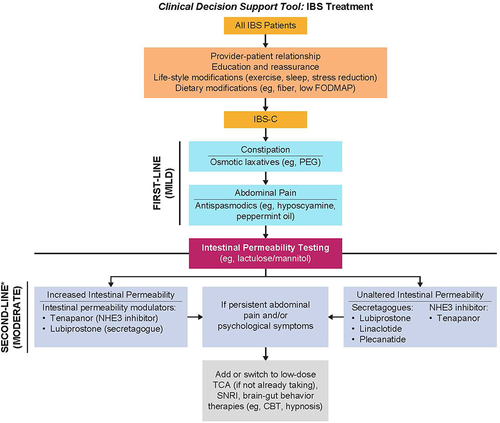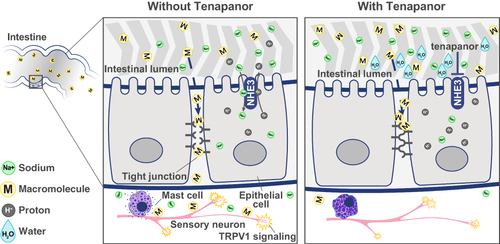Figures & data
Figure 1 Schematic diagram of the intestinal epithelium with (A) normal permeability, and (B) increased permeability. (A) In normal intestinal epithelium, nutrients are absorbed from the lumen of the intestine into systemic circulation by passive, or paracellular, transport between the intercellular spaces. Tight junction proteins interconnecting the epithelial cells stop the transport of macromolecules from the lumen into systemic circulation. (B) In intestinal epithelium with increased permeability, the tight junction complex is disrupted and allow paracellular transport of macromolecules. They may activate mucosal mast cells to produce an inflammatory response, which can excite TRPV1-expressing sensory neurons, leading to increased visceral hypersensitivity and abdominal pain.

Table 1 Factors Associated with Abnormal Intestinal Permeability
Table 2 Methods for Measuring Intestinal Permeability
Figure 2 Clinical treatment decision guide for IBS-C.

Figure 3 Mechanism of action of tenapanor. Tenapanor inhibits NHE3 located on the apical surface of the intestinal epithelial cells. NHE3 inhibition reduces sodium absorption, leading to water retention in the lumen that in turn softens stools and accelerates intestinal transit. NHE3 inhibition also causes retention of intracellular protons in the epithelial cell, which decreases the intracellular pH and increases TEER. This increase is thought to result from a conformational change in the tight junction proteins that decreases intestinal permeability to macromolecules. Tenapanor also normalizes sensory neuronal excitability and TRPV1 currents and reduces visceral hypersensitivity. This figure is published under Creative Commons license CC-BY: King AJ et al. Am J Physiol Gastrointest Liver Physiol. 2024. doi: 10.1152/ajpgi.00233.2023. Copyright © 2024, American Journal of Physiology-Gastrointestinal and Liver Physiology.Citation50

